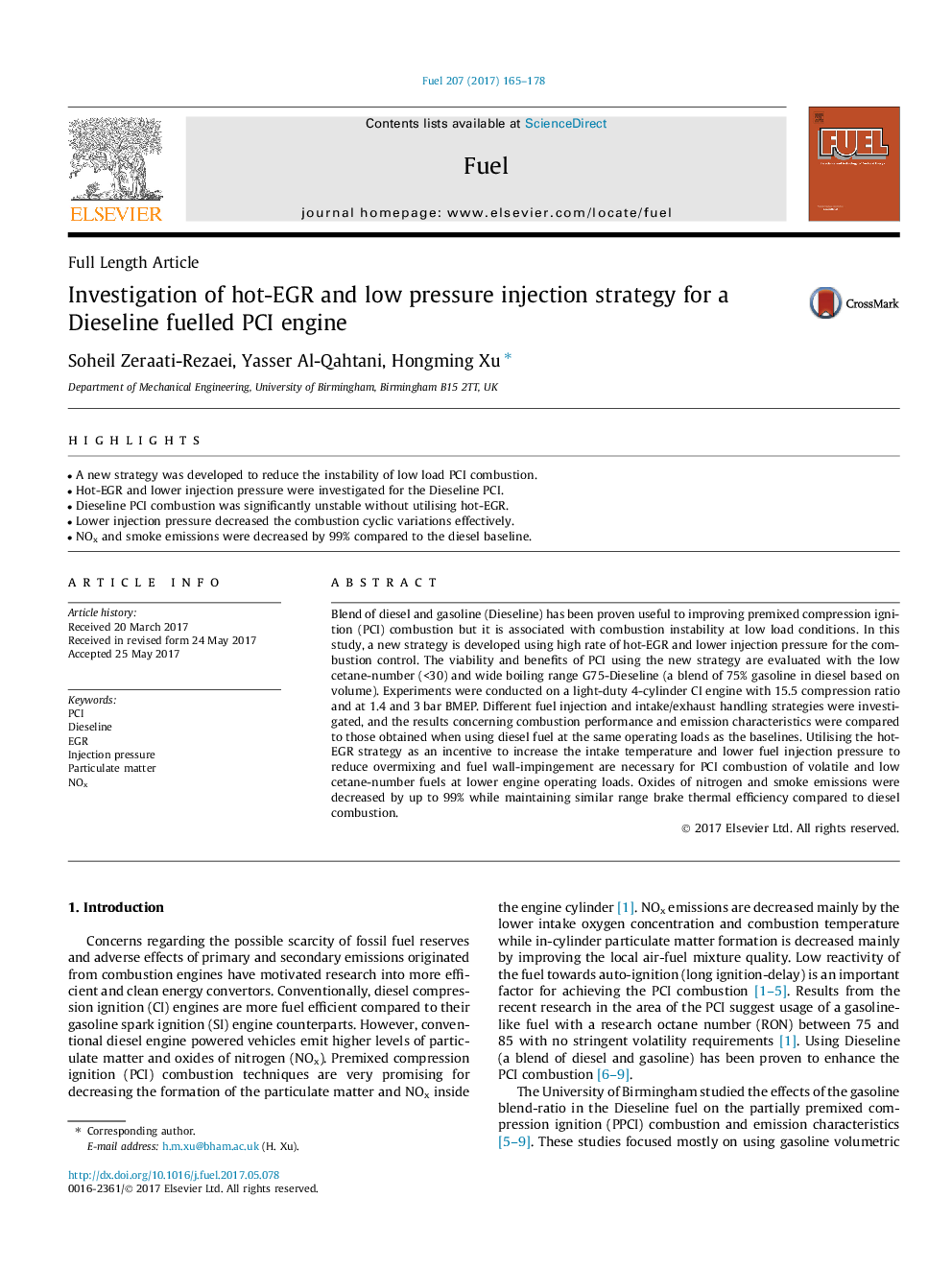| Article ID | Journal | Published Year | Pages | File Type |
|---|---|---|---|---|
| 4768472 | Fuel | 2017 | 14 Pages |
Abstract
Blend of diesel and gasoline (Dieseline) has been proven useful to improving premixed compression ignition (PCI) combustion but it is associated with combustion instability at low load conditions. In this study, a new strategy is developed using high rate of hot-EGR and lower injection pressure for the combustion control. The viability and benefits of PCI using the new strategy are evaluated with the low cetane-number (<30) and wide boiling range G75-Dieseline (a blend of 75% gasoline in diesel based on volume). Experiments were conducted on a light-duty 4-cylinder CI engine with 15.5 compression ratio and at 1.4 and 3Â bar BMEP. Different fuel injection and intake/exhaust handling strategies were investigated, and the results concerning combustion performance and emission characteristics were compared to those obtained when using diesel fuel at the same operating loads as the baselines. Utilising the hot-EGR strategy as an incentive to increase the intake temperature and lower fuel injection pressure to reduce overmixing and fuel wall-impingement are necessary for PCI combustion of volatile and low cetane-number fuels at lower engine operating loads. Oxides of nitrogen and smoke emissions were decreased by up to 99% while maintaining similar range brake thermal efficiency compared to diesel combustion.
Related Topics
Physical Sciences and Engineering
Chemical Engineering
Chemical Engineering (General)
Authors
Soheil Zeraati-Rezaei, Yasser Al-Qahtani, Hongming Xu,
